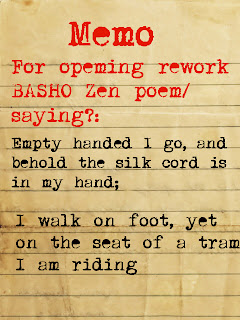One of my readers has
contacted me with some amazing news. He may actually have found the Metropol,
the mysterious hotel featured in Zen City, Iso. In the novel it’s the
setting for much of the 1940s Bangkok action. Further back in the 1920s, the
cast of the long lost British silent film, Shadow of Siam, stayed there.
Some of the film’s interior scenes were shot at the hotel.
Dodgy Jack Palmer was one of the hotel’s long-term denizens and described it thus:
“The
sloping walls, zig-zag staircase and peeling wallpaper with its geometric
patterns, that all serve to give a dizzying disorientation to those not used to
it. Then there's Saigon Sammy snoozing on the rubbish-strewn hotel steps, and
not forgetting the paucity of decent lighting that condemns the place to a sort
of perpetual, brown-dim misery. Meanwhile, I’m escorting the would-be guest
back to their rickshaw.”
In bars across the Kingdom there was heated debate about whether the Metropol was knocked down in the brutal, massive
redevelopment that did for Bangkok in the 60s or even whether the hotel ever
existed at all.
 |
| Atlanta sausage dog (photo: hotel website) |
Well, we may now have the
answer. The hotel in question is called the Atlanta and can be found in
downtown Bangkok. Visiting the website, it looks absolutely wonderfully retro.
Check out that art deco lighting table and the foyer designed by Dr Max Henn in
the 1950s. The Atlanta also promises to be suitably idiosyncratic if the blurb
is to be believed:
"Untouched by pop culture and post-modern
primitivism."
"Not everybody is welcome at the Atlanta."
"The Atlanta does not ask for or listen to
explanations or excuses, and does not apologise for the manner in which
miscreants are thrown out."
So is the Atlanta actually
the Metropol reborn as a hi-end, respectable retro Wunderland? Is it the
place where Palmer stepped out into Bangkok’s mean streets? Where
Little Wong cut a mean brilliantine parting as Madam Sin mopped up the stains? Has
the mystery of the Metropol, in fact, finally been solved?
 |
| Silent film set? (photo: hotel website) |
There’s only one thing for it.
This Christmas I’m going to have to fly back to Bangkok and spend a few nights at
the Atlanta Hotel. Do a little snooping. Find out what’s hiding under that art
deco table of theirs…
Here’s the link to the hotel and photographs:

